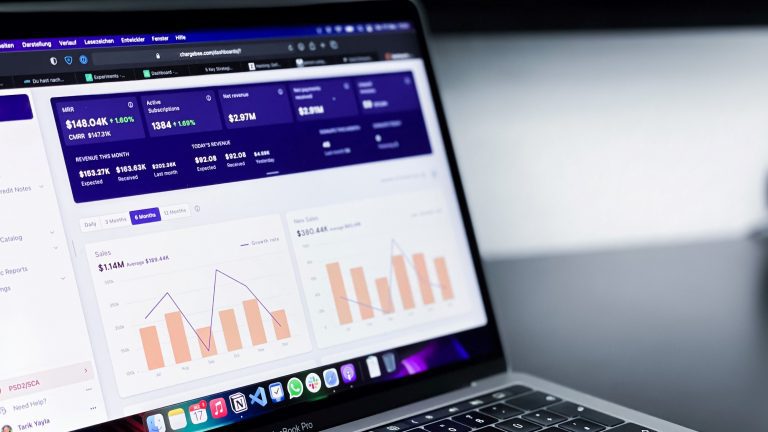
We’ve just hosted the second edition in our data science and consumer analytics meetup series. Each event looks at how data and analytics can improve commercial performance, with a particular focus on retailers and brands.
This time, we examined data-driven customer loyalty and the analytics behind personalisation, with examples from big name brands like Netflix, Nike and Spotify. As well as a presentation from our Chief Data Officer (CDO) Adam Barrowcliff, we were joined by Achille Traore from White Label Loyalty; an enterprise SaaS business specialising in data-driven customer loyalty.
Data-driven customer loyalty by Achille Traore, White Label Loyalty.
Over 75% percent of loyalty and rewards programmes fail. It’s also ten times more expensive to acquire a new customer rather than retain an existing one.
Data-driven loyalty increases revenue, improves retention, grows brand affinity, boosts engagement, and builds customer data – so it should be a key brand strategy.
For many businesses, loyalty programmes fail as they’re expensive to set up and run; offer little flexibility (many loyalty schemes are the same), and often don’t connect to other business systems. On top of this, many programmes aren’t data driven.
From a customer’s point of view, loyalty schemes fail due to a lack of personalisation.
However, there’s a simple process for achieving data-driven customer loyalty:
Information.
Businesses need to put the right strategy in place and understand which levers they want to pull. For instance, which metrics do they want to track?
Data.
Data must be structured in the right way, so that loyalty solutions are based on facts rather than assumptions. Is any data missing or fragmented? Can it be simplified?
Insight.
Businesses need the right tools to interpret data to reward specific behaviours, like campaign interactions, offline purchases, social media activity, ecommerce purchases, referrals and feedback.
Personalisation.
Finally, brands should use personalisation to create a direct relationship with customers. For example, by providing targeted rewards or better customer experience.
Customers now expect personalised experiences, so businesses need to respect their data and establish how to stand out in a competitive market.

The analytics behind personalisation by Adam Barrowcliff, HyperFinity.
One of the primary use cases for data-led decision intelligence is building personalised customer experiences. Netflix, Spotify, Google, Facebook and Amazon are great examples of retailers and brands using personalisation well.
Personalisation is the cornerstone of increased revenue, protection against churn, and customer lifetime value.
The effective personalisation recipe.
Interaction.
Data.
Meaning.
Tech.
Product.
Interaction.
Where should brands personalise during the customer journey to enhance the experience?
Netflix personalise genres/categories (3,500 searchable categories and 75,000 alt genres), titles/products, order, artwork and emails.
Spotify personalise genres/categories, Discover Weekly playlist (curated playlist sitting at the edges of your music taste), artist/song radio, emails, album picks and recommended songs.
Retailers can personalise emails (eg relevant products, personal incentives), clicks (eg targeted media, product sort order), bricks and mortar store propositions (using learnings from online data) and printed media.
Data.
Which data points drive personalisation?
Netflix use search history, browsing data, content streamed/viewed, ratings, email interactions and customer information.
Spotify use search history, listening history, number of plays, favourited music, tracks added to a playlist and customer details.
Retailers can use order value, browsing history, basket/purchase data, substitutes, product prices, data from promotions/marketing and product details.
Meaning.
How can analytics, artificial intelligence and machine learning, combined with human input, create more meaningful data and insight?
Data science techniques like collaborative filtering can surface recommendations for individuals, based on data from a lookalike community. A great example of this is Spotify’s Discover Weekly playlist, which helps audiences discover new music and stay engaged. Spotify’s algorithms look for affinity and overlaps in customers’ playlists.
Affinity data created from collaborative filtering can help define sub genres using clustering and ‘nearest neighbour’ techniques. Natural Language Processing can be used to scrape data from the web, such as meta data, news articles and blogs. Human curation oversees it all.
The insight collected should be stored sensibly to leverage for different types of personalisation. Brands should create a view of customers’ DNA, then build a ‘feature store’. For example, a product feature store could be ‘premium’, ‘scratch cooking’, ‘ethical’ whilst on a customer level, a feature store could be ‘affluent’, ‘vegan’ and ‘scratch cook’.
Tech.
What technology is needed to provide one-to-one experiences? For instance, which cloud best supports your company’s tech and architecture?
Will you take a warehouse or lakehouse approach? What skills does your organisation have?
Product.
Use the insight created to decide which product/content to show the customer.
Keep in mind…
There are practical considerations before you start to personalise:
- Personalised experiences are highly effective, but retailers and brands should take a balanced approach – don’t forget popularity and broad appeal.
- Consider pushing the boundaries of customers’ taste, rather than always showing them products that fall in their sweet spot.
- New content always needs space – it’s harder to personalise for until you’ve collected more data.
- A/B testing is really important for tweaking algorithms and improving results.
Follow us on LinkedIn for updates on future events and listen to the full panel discussion below:


